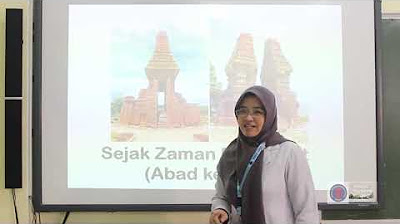"Azas Kontinuitas" Penerapan asas kontinuitas dalam kehidupan sehari-hari'
Summary
TLDRIn this video, the group explains the principle of Continuity and its application in daily life. They introduce the concept of the Continuity Law, which states that the flow rate (debit) of fluid remains constant across different cross-sections of a pipe or hose. An everyday example is watering plants with a hose: when the hose’s nozzle is squeezed, the water speed increases due to the smaller cross-sectional area. The video further explains this concept using a formula, illustrating that the volume of fluid entering and leaving a section remains equal, emphasizing the constancy of fluid flow in a system.
Takeaways
- 😀 The script introduces the concept of the 'continuity principle' in fluid dynamics.
- 😀 The continuity law states that the flow rate (debit) of water is constant at all points along a pipe with varying cross-sectional areas.
- 😀 The law explains that when water flows through a hose, the volume of water at one section must equal the volume at another section.
- 😀 The application of the continuity principle in daily life is demonstrated through watering plants using a hose.
- 😀 When you press the end of the hose, it decreases the surface area at the tip, increasing the speed of the water flowing out.
- 😀 The increase in water speed when the hose tip is compressed is a direct consequence of the continuity principle.
- 😀 The video compares two cross-sectional areas (A1 and A2) of a hose, illustrating that the flow rate must remain constant between them.
- 😀 The mathematical equation derived from the continuity principle is: A1 * V1 = A2 * V2.
- 😀 The principle applies to incompressible fluids in steady flow, meaning the volume flow rate remains the same at all points.
- 😀 The script emphasizes how we unknowingly apply the continuity principle in everyday activities like watering plants.
Q & A
What is the main concept discussed in the script?
-The script explains the concept of the continuity principle in fluid mechanics, specifically the continuity equation, which states that the volume flow rate of a fluid is constant along a streamline.
What does the continuity equation state?
-The continuity equation states that the flow rate of water at different points along a pipe or hose remains the same, meaning the product of the cross-sectional area (A) and velocity (V) is constant (A1V1 = A2V2).
How is the continuity principle applied in daily life?
-An example given in the script is watering plants with a hose. By pressing the end of the hose to make the opening smaller, the water velocity increases, demonstrating the continuity principle in action.
What happens when you press the end of a hose while watering plants?
-When you press the end of the hose, the cross-sectional area of the opening decreases, which causes the velocity of the water to increase, while the volume flow rate remains constant, as per the continuity principle.
What is the significance of the constant flow rate in the continuity equation?
-The constant flow rate means that the amount of water flowing per unit of time does not change, even if the cross-sectional area changes. This is a fundamental principle in fluid dynamics that ensures the conservation of mass.
What is a real-world example of the continuity principle provided in the script?
-A real-world example provided is using a garden hose. When you reduce the opening by pressing the nozzle, the water's velocity increases to maintain the same flow rate.
How does the principle of continuity apply to non-compressible fluids?
-The principle applies to non-compressible fluids by stating that the flow rate remains constant because the volume of a non-compressible fluid doesn't change as it flows through different sections of a pipe or hose.
What does 'A1V1 = A2V2' represent in the continuity equation?
-'A1V1 = A2V2' represents the relationship between the area and velocity at two different points along a pipe or hose, showing that the product of the area and velocity is constant at any point.
What happens if the cross-sectional area of a hose is reduced?
-If the cross-sectional area of a hose is reduced, the velocity of the water increases to ensure that the flow rate remains constant, according to the continuity equation.
What does the continuity equation assume about fluids?
-The continuity equation assumes that the fluid is incompressible and that the flow is steady, meaning the flow rate at any given point is constant over time.
Outlines

This section is available to paid users only. Please upgrade to access this part.
Upgrade NowMindmap

This section is available to paid users only. Please upgrade to access this part.
Upgrade NowKeywords

This section is available to paid users only. Please upgrade to access this part.
Upgrade NowHighlights

This section is available to paid users only. Please upgrade to access this part.
Upgrade NowTranscripts

This section is available to paid users only. Please upgrade to access this part.
Upgrade NowBrowse More Related Video

TOPIK A : BELAJAR DAN MANFAAT MUSYAWARAH | BAB 4 | KELAS 6 PENDIDIKAN PANCASILA | SEMESTER 1

KELOMPOK 11| TPB 9 PENERAPAN FLUIDA DINAMIS PADA INFUS

SOSIOTALK — Kelas XI Bentuk-bentuk kelompok sosial

Pelajaran PPKN Kelas 8 | Memahami Kedudukan dan Fungsi Pancasila

Prinsip Dinamika Fluida | Fluida | Part 4 | Fisika Dasar

P bahri
5.0 / 5 (0 votes)